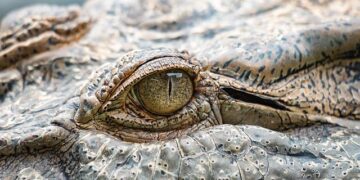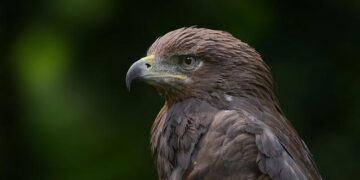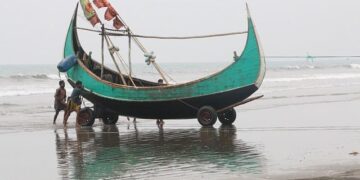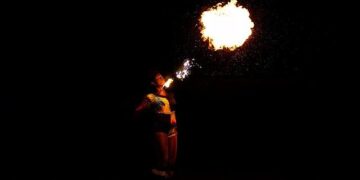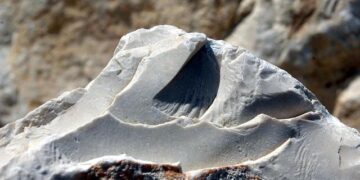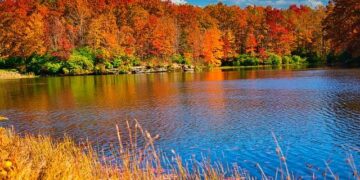For newborns in the ocean, we know that baby corals billow beneath the waves before attaching to something solid; baby comb jellies burst into being in the open ocean; and baby turtles wriggle their way through the sandy shores. But there’s one ocean creature whose birthplace is strangely secretive, and that’s the great white shark.
For decades, scientists struggled to determine where great white sharks gave birth. But in July 2023, two shark specialists — a filmmaker and a biologist searching for sharks off the coast of central California — captured what they describe as the world’s first footage of a wild great white newborn. In an article published in Environmental Biology of Fishes, the footage could clarify where great whites are born, as well as what they look like in their first days — or hours — of life.
Read More: What Makes These 7 Shark Species Stand Out Among the Rest?
Where Are Baby White Sharks Born?
Beloved by biologists and non-biologists alike, great white sharks — identified only as white sharks in scientific studies — are some of the ocean’s best-studied organisms. Swimming through temperate and subtropical seas worldwide, they attract substantial attention. But that being said, there are still an abundance of ambiguities in their lives and lifecycles, including the ambiguities around where they are born.
“Where white sharks give birth is one of the holy grails of shark science,” said Carlos Gauna, a filmmaker and the first author of the January 2024 article, according to a press release. “No one has ever been able to pinpoint where they are born, nor has anyone seen a newborn baby shark alive.”
Filmed from above with an aerial drone, the July 2023 footage featured a small, slender shark swimming to the surface of the water. While great whites are typically white on their stomachs and gray on their backs, this shark was a surprising shade of white — its skin covered in a strange, milky substance.
Though it is possible the substance shrouding its skin signified some sort of unidentified skin condition, the authors of the article provide an alternative interpretation. “The white layer was being shed from the body as it was swimming,” said Phillip Sternes, a biologist at the University of California, Riverside and the second author of the article, according to the same release. “I believe it was a newborn white shark shedding its embryonic layer.”
Read More: The Evolution of Sharks: What Were Ancient Sharks Like?
What Makes a Baby Shark, a Baby Shark?
According to Gauna and Sternes, there were several aspects of the shark’s appearance that support its age as a newborn. These include its size, shape, shade, and position off of California’s central coast, close to the shores of Santa Barbara.
Swimming at around 5 feet from snout to tail, the shark’s build was similar to that of the smallest white sharks on record and was consistent with what researchers would anticipate of a newborn.
“In my opinion, this one was likely hours, maybe one day old at most,” Sternes said in the release.
The second of these factors was the shark’s milky shroud. Before being born, white sharks are sustained by a special substance, called intrauterine milk, that is secreted in their mothers’ uteruses. It is possible, the study authors say, that some of this special substance could continue to surround the sharks in the immediate aftermath of their births. “I believe what we saw was the baby shedding the intrauterine milk,” Sternes added in the release.
For the shark’s position, the coast of central California is commonly cited as a potential birthing place for white sharks. Plump, possibly pregnant sharks are a common presence along the area’s shorelines.
“I filmed three very large sharks that appeared pregnant at this specific location in the days prior. On this day, one of them dove down, and not long afterwards, this fully white shark appears,” Gauna said in the release. “It’s not a stretch to deduce where the baby came from.”
Protecting Baby Birthplaces
Appearing around 1,000 feet from the shore, the newborn’s presence in the shallows suggests that white sharks start their lives a lot closer to the coast than some specialists previously proposed.
“There are a lot of hypothetical areas,” Sternes said in the release, adding that the sighting “may well be the first evidence we have of a pup in the wild,” cinching the California coast as ”a definitive birthing location.”
If indeed definitive, the team’s findings could contribute to the protection of white shark populations, deemed “vulnerable” by the International Union for Conservation of Nature.
“Further research is needed to confirm these waters are indeed a great white breeding ground,” Sternes said in the press release. “But if it does, we would want lawmakers to step in and protect these waters to help white sharks keep thriving.”
Read More: Almost 20 Million Years Ago, Sharks Nearly Went Extinct
Article Sources
Our writers at Discovermagazine.com use peer-reviewed studies and high quality sources for our articles, and our editors review for accuracy, and trustworthiness. Review the sources used below for this article:
National Ocean Service. What is coral spawning?
Aquarium of the Pacific. Jelly Reproduction.
Springer Link. Novel aerial observations of a possible newborn white shark (Carcharodon carcharias) in Southern California.
NOAA Fisheries. White Shark.
BioOne Digital Library. The Smallest Known Free-Living White Shark Carcharodon carcharias (Lamniformes: Lamnidae): Ecological and Management Implications.
ICUN Red List. White Shark.
>>> Read full article>>>
Copyright for syndicated content belongs to the linked Source : Discover Magazine – https://www.discovermagazine.com/planet-earth/baby-shark-spotted-scientists-film-their-first-footage-of-a-white-shark

